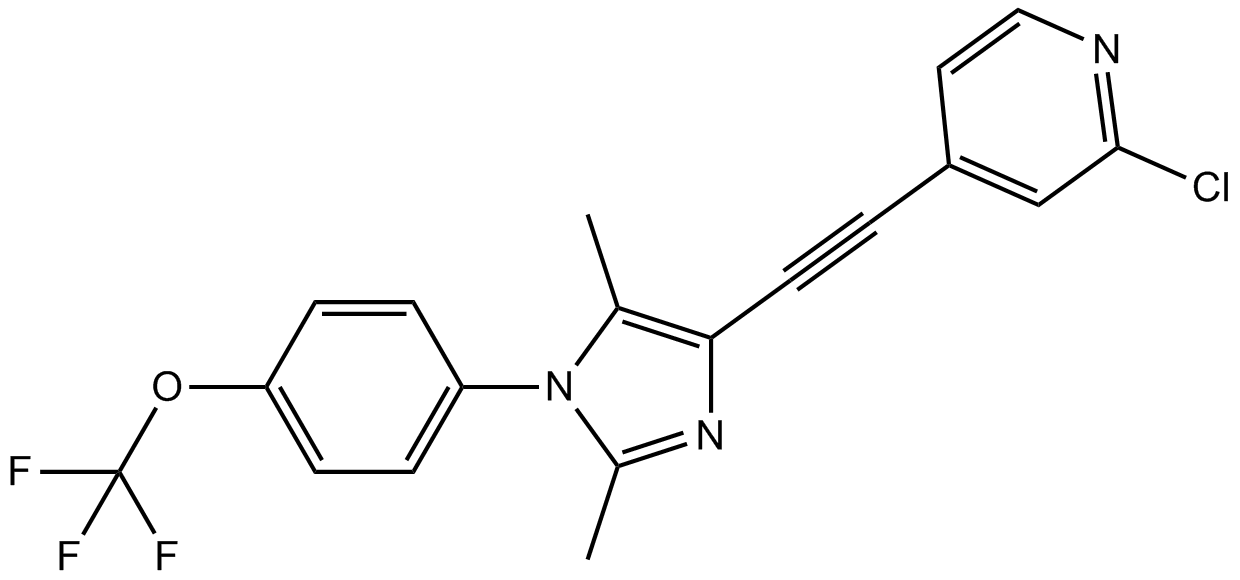CTEP (RO4956371) (Synonyms: RO 4956371; mGluR5 inhibitor) |
| Catalog No.GC16619 |
CTEP (RO4956371) (RO 4956371) is a novel, long-acting, orally bioavailable allosteric antagonist ofmGlu5receptor withIC50of 2.2 nM, and shows > 1000-fold selectivity over other mGlu receptors.
Products are for research use only. Not for human use. We do not sell to patients.

Cas No.: 871362-31-1
Sample solution is provided at 25 µL, 10mM.
CTEP is a potent, long-acting, and orally bioavailable inhibitor of metabotropic glutamate receptor 5 (mGlu5) with IC50 value of 11.4nM [1].
CTEP is a negative allosteric modulator of mGlu5 and has inverse agonist activity. In the in vitro binding assay, CTEP binds to human, mouse and rat mGlu5 with Kd values of 1.7nM, 1.8nM and 1.5 nM, respectively. In HEK293 cells expressing mGlu5, CTEP inhibits quisqualate-induced Ca2+ mobilization and inositol phosphate accumulation with IC50 value of 11.4nM and 6.4nM, respectively. In addition, it shows an IC50 value of 40.1nM in the IP accumulation assay, demonstrating its inverse agonist activity. CTEP is proved to be a highly selective inhibitor of mGlu5. It shows no significant activity against mGlu1, mGlu2, mGlu3, mGlu4, mGlu6, mGlu7 or mGlu8 at concentration up to 10μM [1].
In the in vivo Vogel conflict drinking test, CTEP markedly increases drinking time at doses of 0.3mg/kg. In adult C57BL/6 mice brain, CTEP displaces the mGlu5 antagonist ABP688 in the regions expressing mGlu5 by 50% at dose of 77.5 ng/g [1].
References:
[1] Lindemann L, Jaeschke G, Michalon A, et al. CTEP: a novel, potent, long-acting, and orally bioavailable metabotropic glutamate receptor 5 inhibitor. Journal of Pharmacology and Experimental Therapeutics, 2011, 339(2): 474-486.
Average Rating: 5 (Based on Reviews and 15 reference(s) in Google Scholar.)
GLPBIO products are for RESEARCH USE ONLY. Please make sure your review or question is research based.
Required fields are marked with *




















